Day 8 – 12:
It was the night of Day 7, when we were finally out of the lull and firmly into the trade winds. The winds kicked up to 20 knots and the ocean swells got bigger. Our tried and tested Parasailor kept us moving downwind with minimal fuss. We were now covering 192 to 197 nm each day.
Initially the waves felt quite choppy – they were short and somewhat random in direction. It felt as though the waves were not aligned with the winds just yet. The boat rocked about in all directions, making it hard to stand and move about on board. However, as we got further into the trade winds, the waves lined up nicely and we were surfing our way to the Caribbean.
No more fishing
A casualty of sailing fast at 10 knots/hour or more in high swell is the ability to fish. The first step when you hook a fish, is to immediately slow down the boat – otherwise the line will snap and you lose the catch. You might think that on an Atlantic crossing, sailing considerations would be the first order of business. But you would be wrong – Fishing takes precedence and it requires team effort. There is a healthy respect and serious envy of the team that catches the largest or most fish, irrespective of when they show up at the destination. Team Jajabor understands this well.
The crew has been primed to jump into action when they hear the sound of a fishing rod line playing out. One person jumps to start the engines and take over the helm, while a couple of the others douse the Parasailor. That brings the boat to a halt. The angler has the important job of managing the fishing rod while all this is happening. The larger the fish, the more intense the fight and the longer it takes to reel it in. The person managing the helm may have to reverse the boat or change directions to avoid entangling the line with our propellers or sail drive. Despite our heroic team effort, we only managed to bring a fish in about one in two times. We speculated on the size of the fishes that got away. It had to be huge perhaps a large tuna or a spectacular Mahi Mahi.
Clearly all this becomes a lot harder when we are speeding across the Atlantic and so one would need to focus on less important matters like sailing. But I suspect the real reason is that the bragging rights on this passage has already been won by HoloHolo who posted a picture of a gynormous yellow fin tuna they had caught. Larger than a person, and estimated to be over 70Kgs, its supposedly a catch of a lifetime. Somebody muttered “how are we supposed to compete with that?” So for now we retire our fishing rods for the rest of the passage confident that the last one that got away was surely over 70Kg!
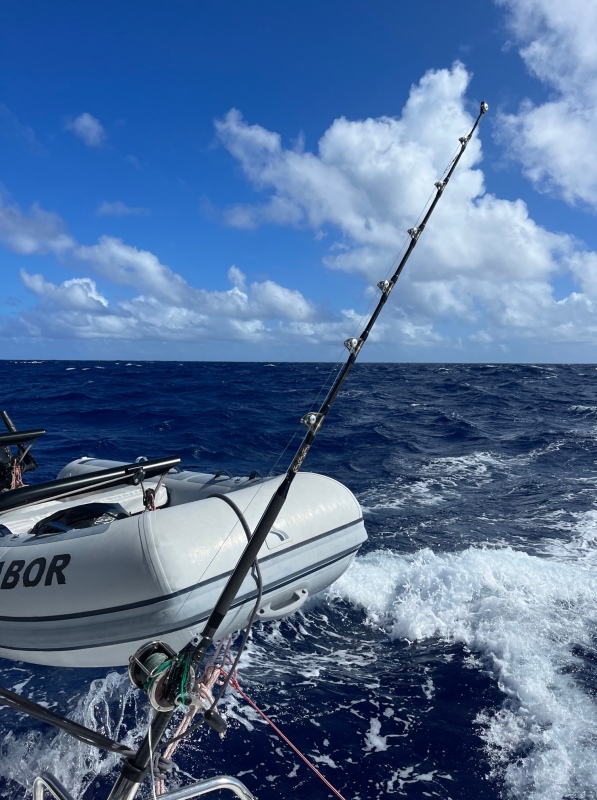
Fishing rod retired for now
The fish in our freezer will have to do for the rest of the trip.
Flying fish
We see a lot of flying fish as we cut through the water. These are ray-finned fish with highly modified pectoral fins which allow them to escape predators by propelling themselves out of the water and gliding surprisingly long distances. As we approach a shoal, they scatter in all different directions. Frequently at night, some of these fish end up on the boat. We even find them inside the cabin having flown in through open hatches. They have an intense fishy smell and you realize you have one on board rather quickly. One morning, Sara counted 93 flying fish on their boat Dawdle. That is one fishy mess to clean up. On our boat, during their watch, Mihael had one fly straight onto his forehead, much to Juan’s amusement.
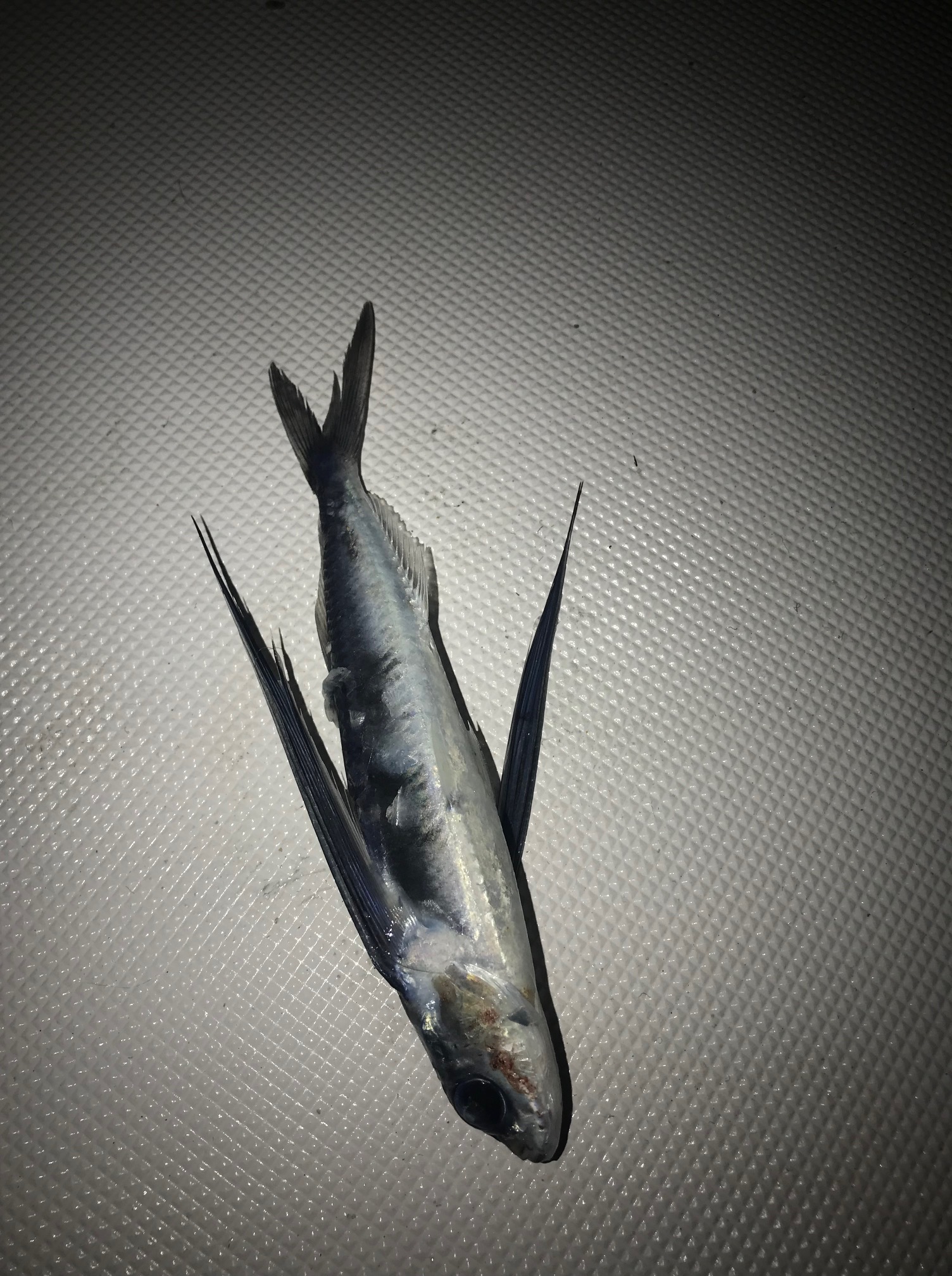
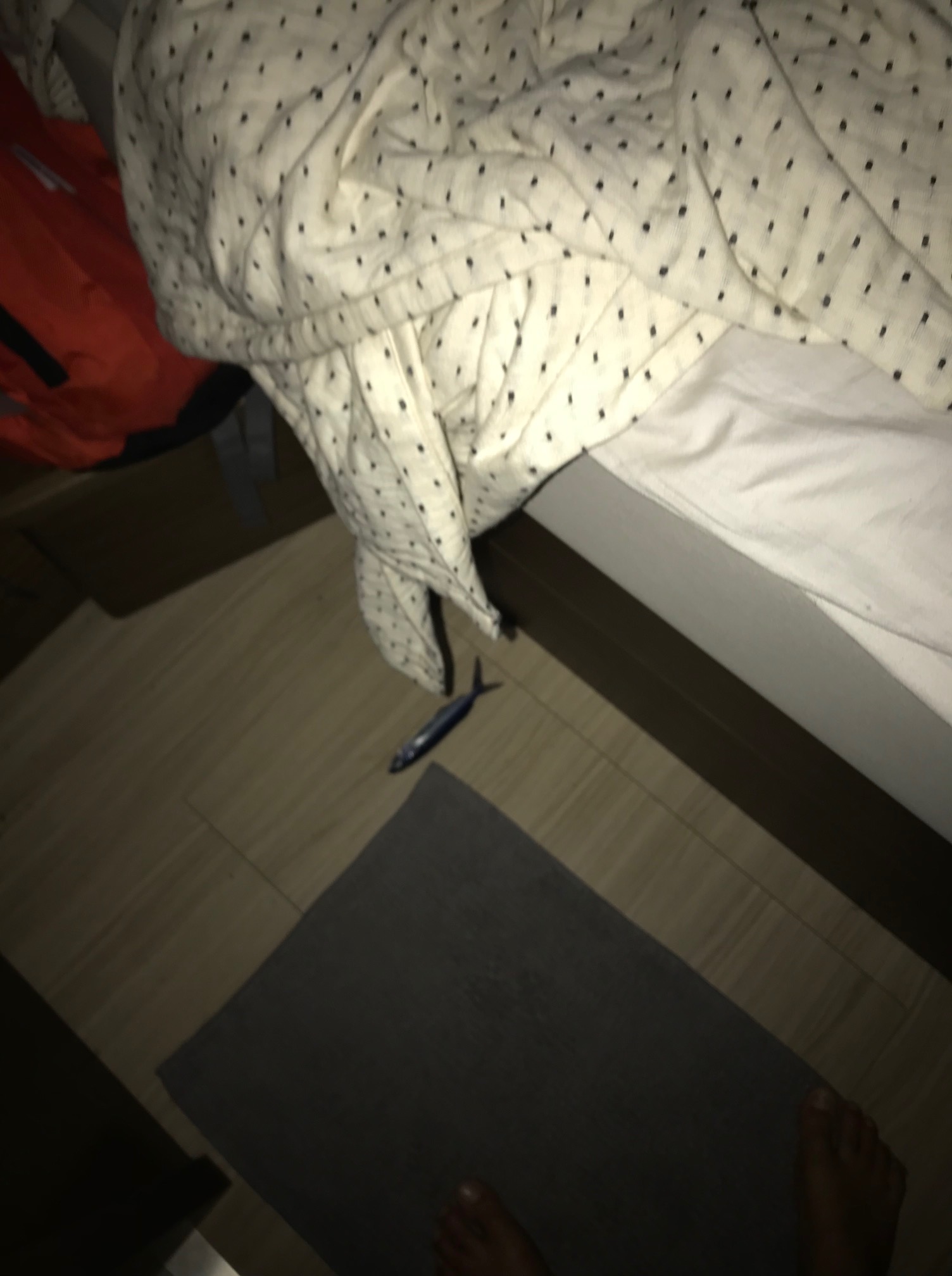
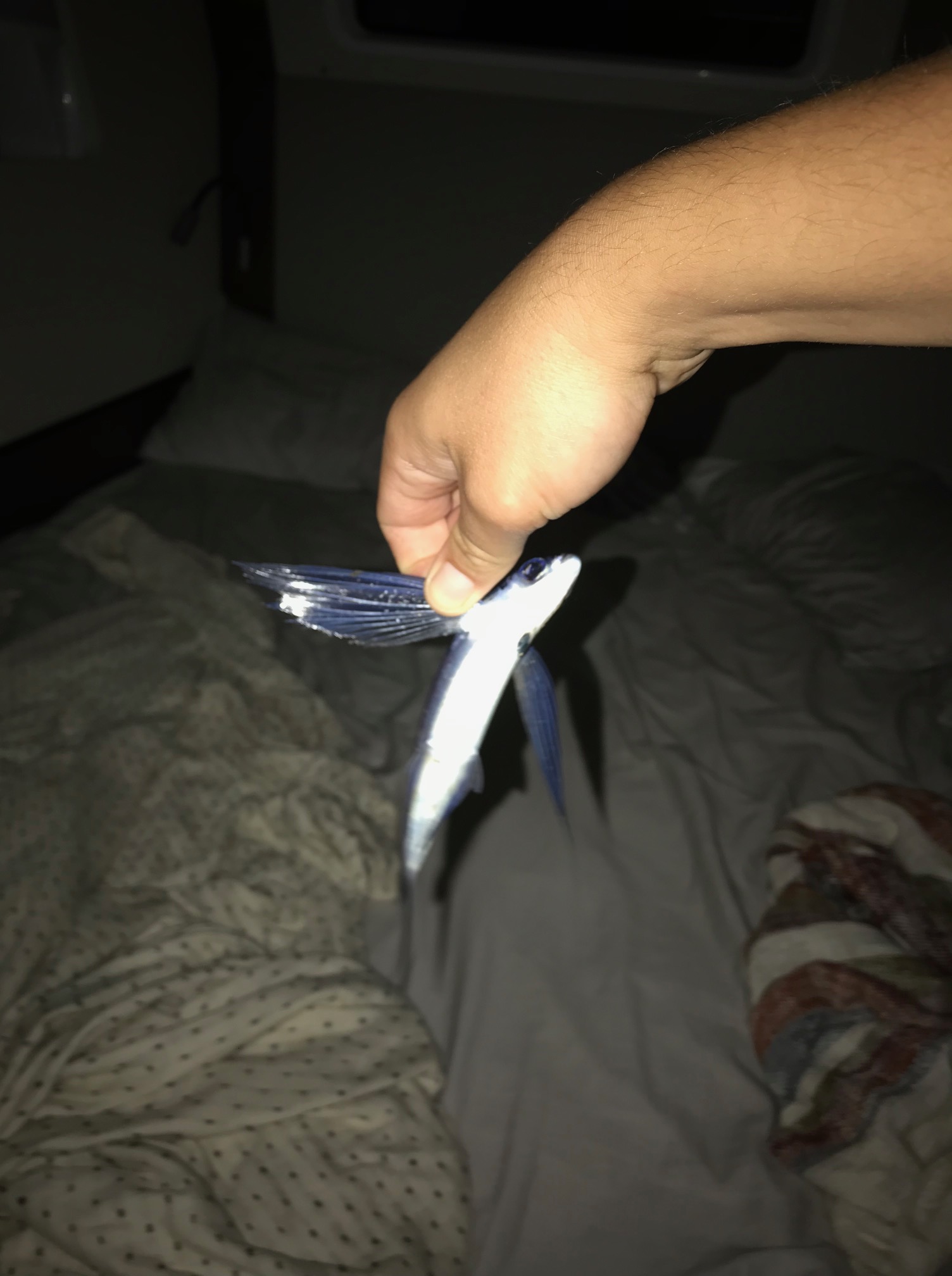
Loud, Noisy and Bumpy
An aspect of blue water sailing that non-sailors may not know is how noisy boats can be. The sounds of the wind, waves, and the boat combine to form a constant background of marine noise. Waves crashing in the sea can be loud, hitting the bow with water splashing on the deck with remarkable regularity. Our cabins are in the narrow hulls and the beds close to the waterline. While sleeping, only the fiberglass walls of the hull separate you from the ocean. You hear and feel the impact of the waves as the hulls slice through the water. From the ferocious hammering, it would seem that the boat could tear apart, but it seems to handle it just fine- a testament to the boat’s construction. As the boat frame flexes under the force of the waves, the cabinetry creaks and groans. All this makes for a very noisy environment and took us time to get used to it. Now it’s just background noise and we can distinguish the “normal” sounds from specific “uncommon” (and possibly troubling) sounds such as a bilge pump running, or a grey water pump not shutting down, or changing sea conditions that affect the sailing setup.
Nearing the end
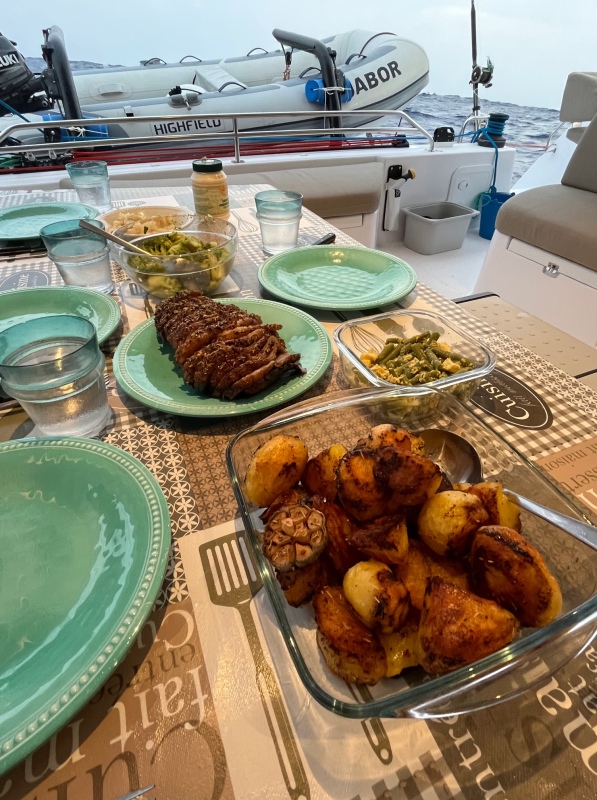
Roast beef with roasted potatoes cooked by David
The days flew by fast with our regular boat routines. We celebrated our halfway point with a steak dinner. It felt like we had climbed a mountain and were now cruising downhill. We were running low on fresh vegetables and onions. Even as the chefs jostled over who would have the last couple onions, or peppers, the meals continued to be spectacular with each person outdoing the other. It wasn’t easy to prepare meals though . We changed course around the 1600 mile mark and were now reaching to keep a north westerly course to our destination. The Parasailor was replaced by our regular main and solent. It meant that we now had the waves coming at us at an angle on the starboard side and rocking the boat fiercely. Day 12 ended with only 200 odd miles to go. We expect landfall sometime tomorrow night.

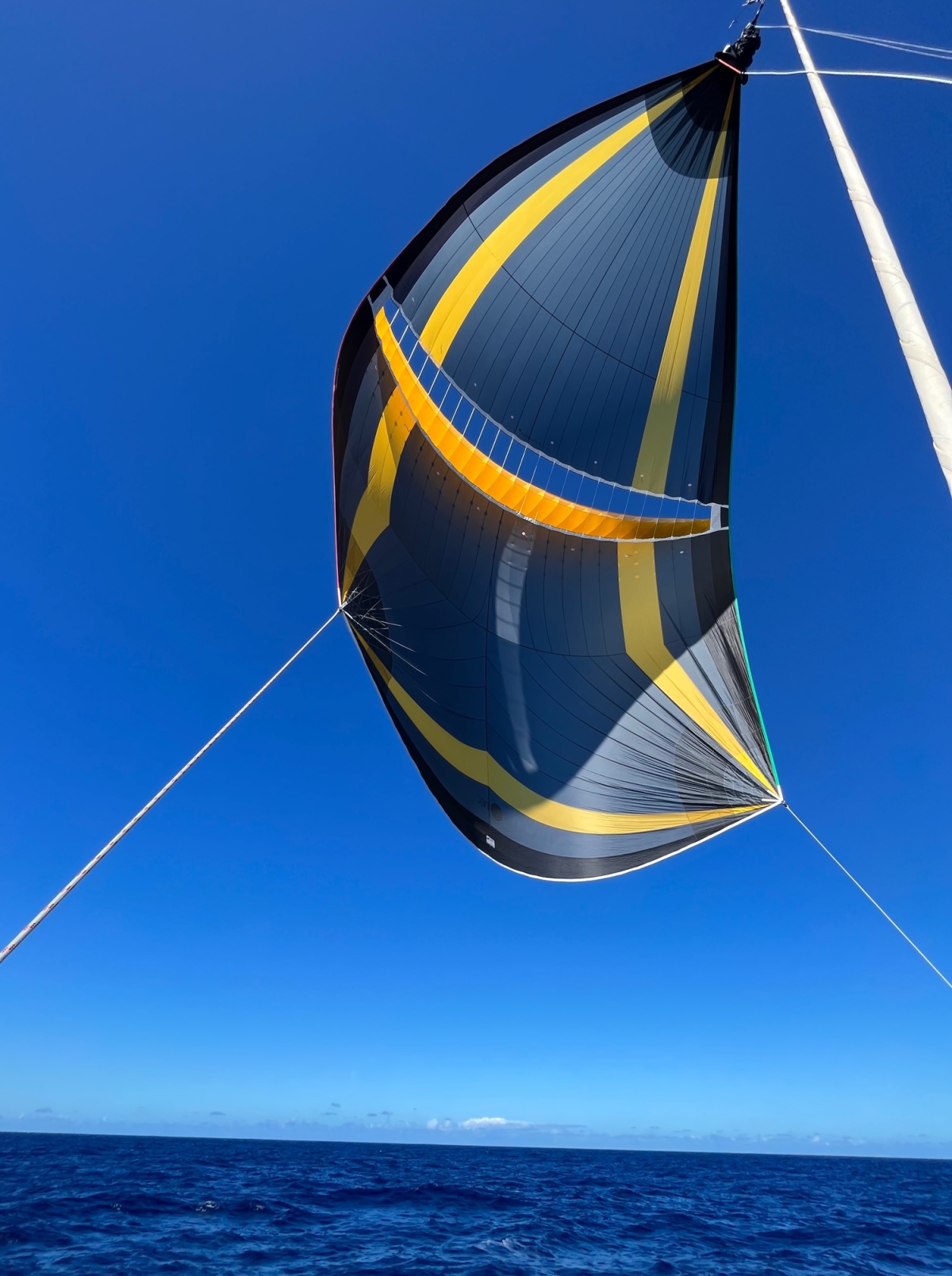
Most excellent prose and great food post! Well done !
LikeLike
Thank you for reading.
LikeLike